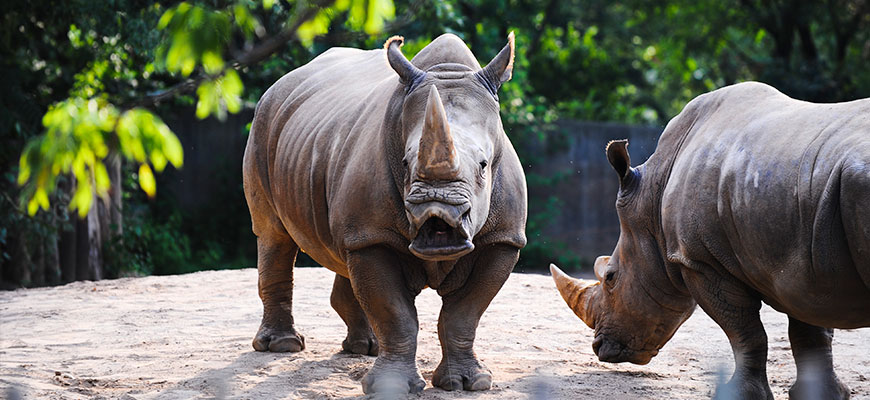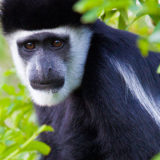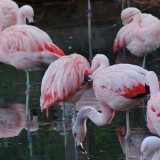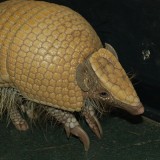RANGE
Southern Africa.
HABITAT
Drier savannas.
SIZE
Weight: 4,000 – 6,000 lbs.
REPRODUCTION
- Births can occur in any month, but typically peak at the end of the rainy season.
- Gestation period of approximately 16 months.
- Offspring are usually small, weighing about 143 pounds at birth.
- Young are able to travel with mother in as little as three days.
- White rhino young typically run in front of the female, as opposed to black rhino young which follow their mothers from behind.
- Males rarely associate with females, except when the female is in heat.
DIET
Wild: leaves, grasses, woody plants.
Captivity: Timothy and alfalfa hay, low fiber grain, fruits and vegetables
BEHAVIOR
- Mostly solitary, although this species is the most social and will form small groups of both sexes and all ages occasionally.
- Dependent on small pools of water for drinking and will visit pools daily when they are readily available. Rhinos also depend on mud to coat their skin. It is thought to help protect against biting flies.
- Home ranges of females vary from 3.3 – 5.8 square miles, but will increase if food and water becomes scarce.
- Females will stand protectively over their young if danger is present. White rhinos are not as aggressive as black rhinos and are frightened off easily.
POINTS OF INTEREST
- Rhino horns are made of keratin, the same material that makes up hair. They are non-permanent and can be trimmed or removed without harming the animal.
- White rhinos are both nocturnal and diurnal, grazing both day and night.
- After a confrontation between two males, the dominant male will spray urinate as his opponent retreats. Only the dominant male spray urinates.
- African rhinos, including both Northern and Southern White Rhinos, have two horns.
- White rhinos are also called square-lipped rhinos.
- Rhinos eyesight is not their dominant sense. They have excellent hearing and a superb sense of smell.
- Leopards, lions and hyenas prey on young. Adults have no natural enemies except man.
STATUS
Endangered (CITES Appendices I, II). Endangered due to poaching. The rhino horn has long been prized by cultures around the world for making dagger handles, medicines, aphrodisiacs, and even cups for royalty.
REFERENCES
- Rhinoceroses. The Audubon Society Encyclopedia of Animal Life. (Portland House), 1987; 71-73.
- Rhinoceroses. The Encyclopedia of Mammals. (Barnes and Noble, Inc.), 1999; 490-497.






